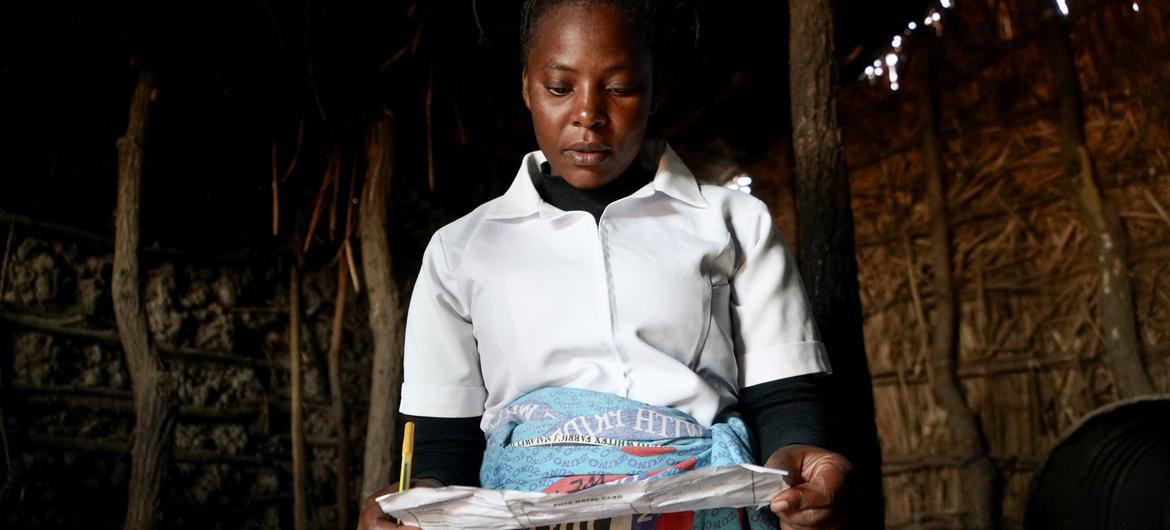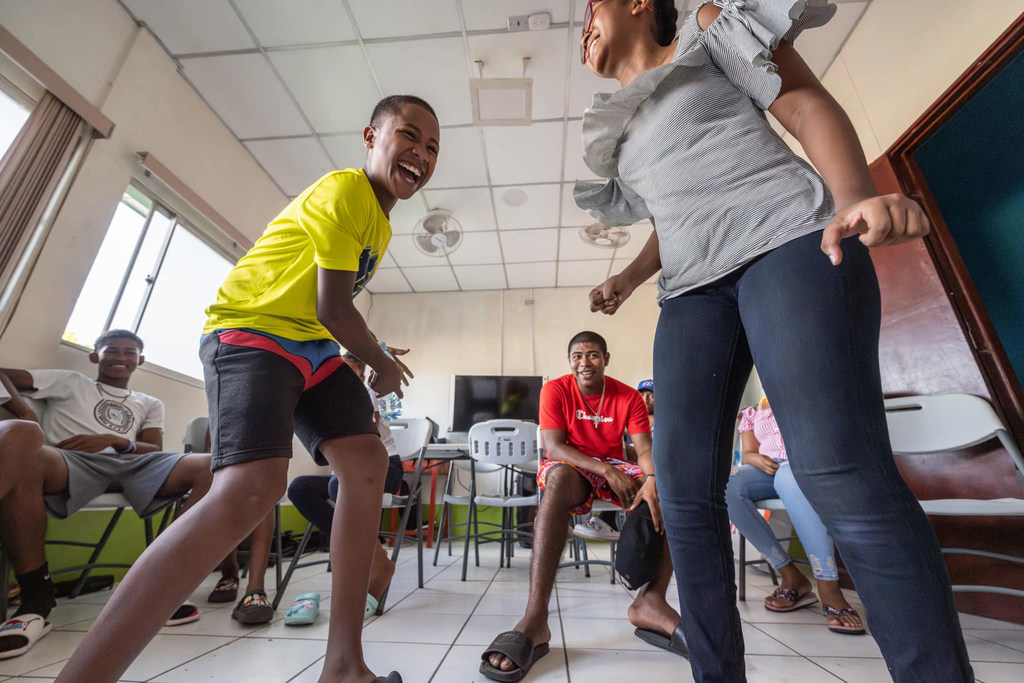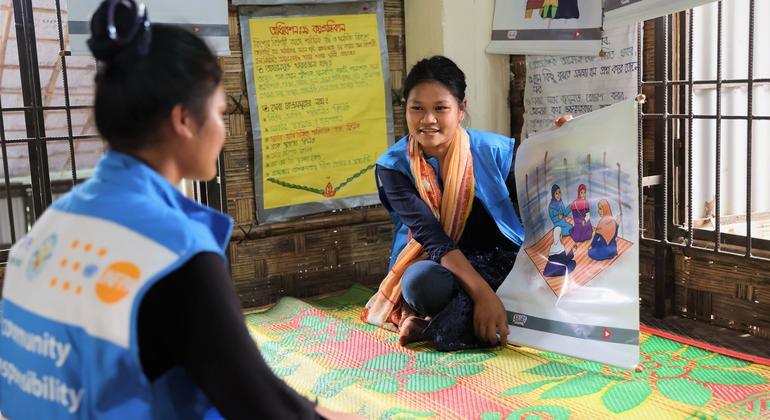“I was married at 14 and I lost my first child at 16 during pregnancy,” said Ranu Chakma. Children’s marriage is common in his village of Teknaf Upazila, on the southern coast of Bangladesh, even if it is illegal and a violation of human rights.
These violations even arise at a time when many countries prohibit illegal practice, more recently in Colombia, where a law entered into force earlier this month.
Here are five common common ideas on children’s marriage:
Myth 1: It’s always illegal
Children’s marriage is prohibited under numerous international agreements, the Convention on the Rights of the Child and the Convention on the elimination of all forms of discrimination against women on the program of action of the International conference on population and development in 1994. Are 640 million women and girls worldwide who were children’s wives, with more children’s weddings that take place every day.
How is it possible? Many countries prohibit child marriage in principle, but define the authorized age of marriage as something other than 18 years old or allow exceptions with the consent of parents or by virtue of religious or customary law. In many cases, these marriages and marriages in general are not legally registered, which makes the application of the law difficult.
Tackling children’s marriage requires more than laws; We must rethink the way society appreciates girls.
Programs like Taalim-I -aubalighan, in Bihar, India, where two out of five children marry before the age of 18, have an impact. These programs encourage young people to think about subjects such as gender roles and human rights.
“This is why I was able to help my sister,” said Altamash, a student whose sister wanted to avoid child marriage and continue her studies. “When I understood his desire and how it would help him, I pleaded him to my father. She will now finish her studies and I am so proud of her.
In Madagascar, information sessions are essential to change minds and make children’s marriage and other harmful practices.
Myth 2: Sometimes children’s marriage is necessary
Childhood marriage remains omnipresent in part because it is considered a solution to other problems.
In humanitarian crises, children’s marriage rates often increase, parents believing that marriage will ensure the future of a girl by making a husband responsible for supporting her economically and protection against violence. Children’s marriage is considered a solution that will preserve the honor of a girl and her family after – or in some cases before – she gets pregnant. In developing countries, the majority of adolescent births take place in a marriage.
However, child marriage is not a real solution to any of these problems. Childhood marriage itself leads to girls who experience high levels of sexual, physical and emotional violence of their intimate partners. Pregnancy is dangerous for girls; Complications for pregnancy and childbirth are one of the main causes of death in adolescent girls. Children’s wives and adolescent mothers are often forced to abandon from school, which has turned their future perspectives upside down.
Nicolette, 16, in Madagascar, was so used to seeing her classmates disappear from school after marrying and becoming pregnant, she never thought of questioning the practice. It is until she attended an awareness session at the end of the UNFPA.
“I did not know that we could be victims of child marriage,” she said. Now she wants all the girls in her community to know: “Everyone has the right to make their ambitions and marriage is a choice.”

More than three -quarters of girls in Niger are married while they are still children.
Myth 3: This problem disappears
Childhood marriage may seem like a problem of the past or distant places, but in fact, it remains a serious threat to girls around the world.
While the world’s world rates decrease slowly, places with the highest rates also have the most demographic growth, which means that the absolute number of children’s marriages should increase.
The problem is indeed global. The greatest number of children’s wives live in the Asian and Pacific region, the highest child’s marriage rate is observed in sub -Saharan Africa and the lack of progress in Latin America and the Caribbean means that this region should have the second highest prevalence of the largest child marriage prevalence by 2030.
However, the problem is not limited to developing countries. It also takes place in countries like the United Kingdom and the United States.
“I was mainly presented to someone in the morning, and I was forced to marry it that night,” said Sara Tasneem, recalling her marriage, first an informal spiritual union at 15 and then legally at the age of 16. “I got pregnant right away, and we were legally married in Reno, Nevada, where it only required the authorization signed by my father.”
To change this, actions must be accelerated to end children’s wedding, especially by empowering girls.
“I was 13 when my father gave my hand to marriage to a cousin,” said Hadiza, 16, in Niger. Fortunately, she had access to a safe space thanks to a youth program supported by UNFPA. “I talked to a safe space mentor who, with the help of the district chief, negotiated with my parents to postpone the marriage.”
Today, Hadiza is an apprentice for a tailor, learning skills to become economically self -sufficient. “In three years, I plan to marry the man I love,” she said.

The nurse Suvannah Sinakaaba takes care of the pregnant adolescents of the mobile clinic supported by the UNFPA in the village of Namalyo, in Zambia.
Myth 4: It is a cultural or religious problem
Children’s marriage is sometimes distorted as a religious or culturally mandated practice. But there are no major religious traditions that require child marriage.
In fact, cultural and religious leaders from around the world often take a strong position against child marriage, especially when they have provided evidence of the consequences of practice.
“We have always taught young people that, both religiously and legally, he was not advised,” said Shirkhan Chobanov, the imam of the Jumah mosque in Tbilisi, in Georgia. “We also explained to these young people that they had to accomplish other tasks, mainly concerning their education, before thinking of starting a family.”
The UNFPA works with religious leaders from around the world who work to end children’s marriage, including priests, monks, nuns and imams.
“We see very good results with regard to children’s marriage,” said Gebreegziabher Tiku, priest in Ethiopia.
Myth 5: It only happens to girls
Although the vast majority of children’s marriages involve girls, boys can also get married.
Globally, 115 million boys and men were married before the age of 18, according to 2019 data. These unions are also linked to early paternity, limited education and reduced opportunities in life.
However, girls are affected disproportionately by practice, with approximately one young woman in five aged 20 to 24 married before their 18th birthday, against one young man in 30. Children’s marriage rates for boys are very Bas even in countries where children’s marriage among girls is relatively high.

Young empowerment programs are reaching all adolescents with information on their human rights in Nicaragua, which has one of the highest levels of marriage of children among boys.
Regardless of the sex of the child affected or the country in which the union takes place, the marriage of children is a harmful practice which requires attacking a common set of deep causes. They include economic inequalities, limited access to sexual and reproductive health services and information, and factors such as conflicts. One of the greatest deep causes – gender inequality – requires urgent and renewed concentration.
“Although we have abolished children’s marriage, we have not abolished predatory masculinity,” said Dr. Gabrielle Hosein, director of the Institute of Gender and Development Studies at the University of Antilles, in Trinidad And in Tobago, shortly after this country has prohibited this country. Childhood marriage.
Kevin Liverpool, an activist from the Cariman plea group, said that men and boys have an essential role to play.
“It is important to raise awareness of these groups, among these individuals, on what feminism is, why gender equality is important for women, but also for men and for all society,” He declared.




